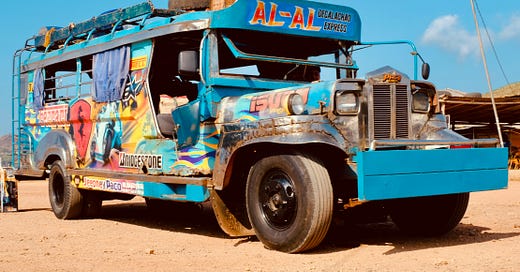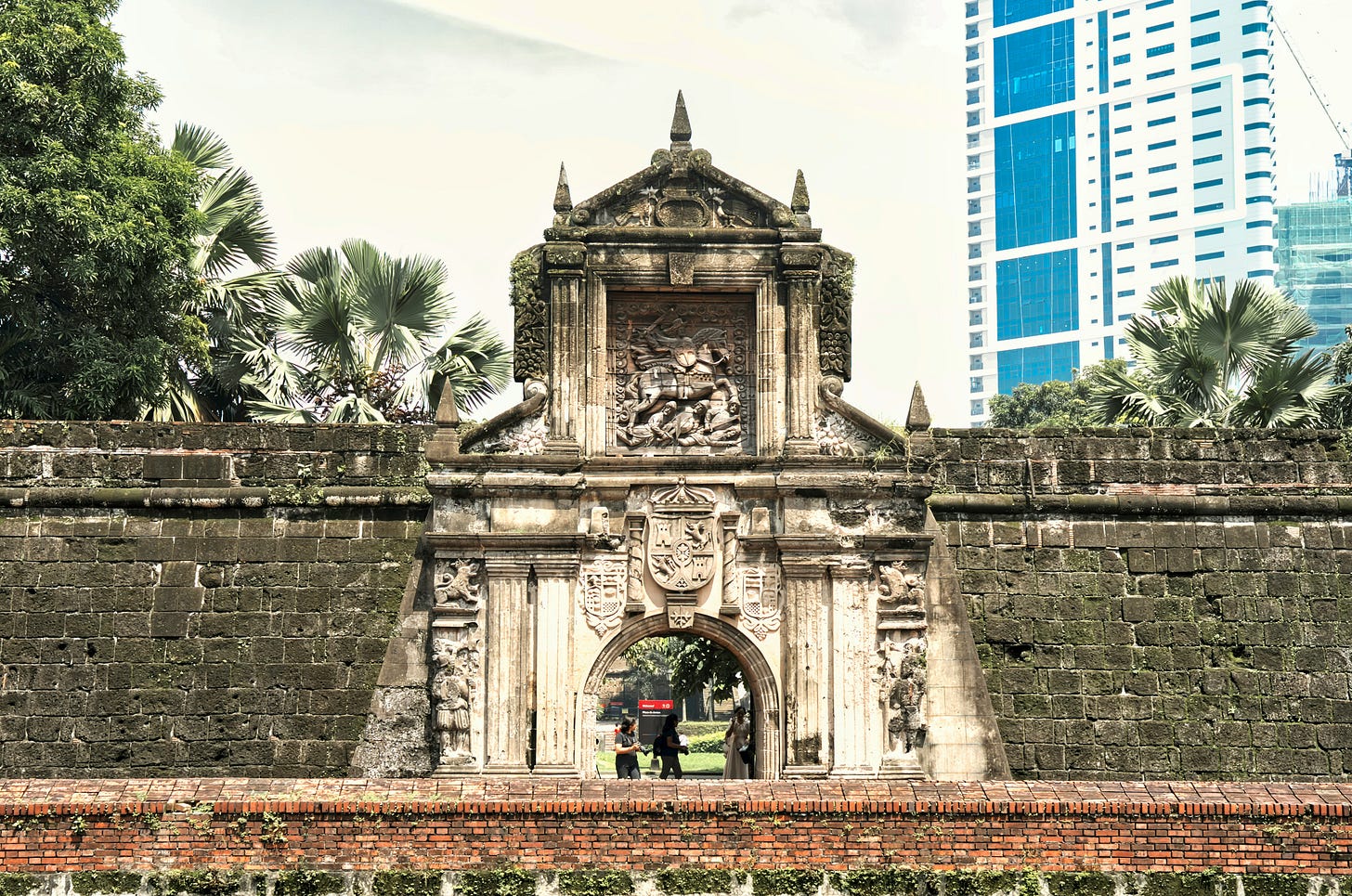In 2015, I spent two months in Davao when Duterte (who we briefly met) was still mayor and running for president.
I had an unforgettable experience. The islands are absolutely stunning, everyone was so kind to me, and I became curious about what shaped the country. Why did so many have Spanish surnames? And how come almost everyone seems to rock karaoke?
I found many answers, and today, I want to take you on a journey with me into Filipino culture.
🛶 A Short History
You could say the Philippines began around 3000 BCE with Austronesian seafarers, among the world’s first long-distance sailors.
By 1000 BCE, the islands were organized into maritime chiefdoms, actively trading with India and China.
Between the 1300s and 1500s, Islam spread mainly to Mindanao through Muslim traders and missionaries, leading to the rise of sultanates—a region that remains predominantly Islamic in a country that is about 80% Catholic.
From 1565 to 1898 (over 300 years), Spain colonized the Philippines for its strategic trade location. This era was marked by economic exploitation, widespread Catholicism, and hispanization—explaining why many Filipinos have Spanish surnames. Despite common belief, resistance was frequent and many indigenous spiritual practices survived. A key figure during this time was José Rizal, the national hero who exposed Spanish abuses through his writings and was eventually executed. His most famous book is Noli Me Tangere (“Don’t Touch Me”).
In the late 1890s, the US and Spain fought the Spanish-American War over colonies like Cuba and Puerto Rico. Spain, losing the war, ceded the Philippines to the US for $20 million. Suddenly, the Philippines were under US rule. Although Filipinos fiercely resisted in one of the bloodiest conflicts in Asian history, the US prevailed and stayed for almost 50 years.
During WWII, the Japanese occupied the Philippines. After nearly 370 years of colonization, the country finally gained independence on July 4, 1946, under the Treaty of Manila.
📕 State of War - Ninotchka Rosca (Novel)
After gaining independence following World War II, the Philippines saw several presidents, but the most infamous and longest-ruling was Ferdinand Marcos.
He declared Martial Law in 1972 and ruled as a dictator for 21 years. He is believed to have stolen between $5–10 billion from the Central Bank.
In Ninotchka Rosca’s novel State of War, three rebels—Eliza, Adrian, and Anna—plot against a dictator known as The Commander, a stand-in for Ferdinand Marcos. The novel offers sharp insight into the Marcos era while also delving into the deeper wounds of Spanish colonial rule, showing how history, trauma, and resistance echo across generations.
🎬 The Kingmaker (Documentary)
After reading all this, you might be surprised to learn that the Philippines’ current president is Ferdinand Marcos’ son, Bongbong Marcos. Decades after the dictatorship, the Marcos family is back in power.
Keep reading with a 7-day free trial
Subscribe to Cultural Reads Newsletter to keep reading this post and get 7 days of free access to the full post archives.



